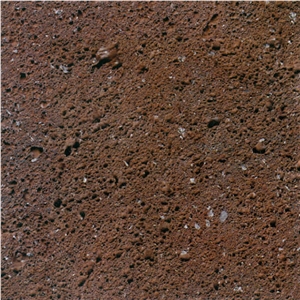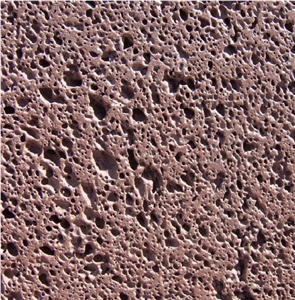-
 Additional Names:Red Volcanics Basalt,Red Basalt,China Red Lavastone,China Red Lava StoneRed Volcanics Basalt,Red Basalt,China Red Lavastone,China Red Lava StonePost Request
Additional Names:Red Volcanics Basalt,Red Basalt,China Red Lavastone,China Red Lava StoneRed Volcanics Basalt,Red Basalt,China Red Lavastone,China Red Lava StonePost Request China
-Basalt
China
-Basalt -
 Additional Names:Yunnan Red Lava Stone,Yunnan Red Brown BasaltYunnan Red Lava Stone,Yunnan Red Brown BasaltPost Request
Additional Names:Yunnan Red Lava Stone,Yunnan Red Brown BasaltYunnan Red Lava Stone,Yunnan Red Brown BasaltPost Request China
-Basalt
China
-Basalt
- 1
-
Can Turkey's Laguna Basalt be used in landscaping?Yes, Turkeys Laguna Basalt can be used in landscaping. Laguna Basalt is a natural stone with a dark grey color and a unique texture, making it a popular choice for various landscaping projects. It can be used for pathways, walkways, driveways, patio areas, retaining walls, water features, and decorative elements in gardens. Its durability and weather resistance make it suitable for outdoor use, and its natural beauty adds a stylish and elegant touch to any landscaping design.Read More
-
Are there color variations of Turkey's Mucarta Basalt?I do not have access to the latest s or developments. However, based on my search results, I couldnt find any information on color variations of Turkeys Mucarta Basalt. It appears that Mucarta Basalt is typically dark gray or black, and it is highly preferred for indoor and outdoor decoration thanks to its unique texture and durability.Read More
-
Can Israel's Tiberias Basalt be used in a bathroom?Yes, Israels Tiberias Basalt can be used in a bathroom. Basalt is a durable and water-resistant natural stone that is suitable for various applications, including bathroom surfaces. Its ability to withstand moisture and its durability make it a good choice for countertops, flooring, shower walls, and other bathroom features. However, it is recommended to properly seal the basalt to prevent stains and ensure longevity in wet areas like bathrooms.Read More
-
Can Italy's Seiser Basalt be used in landscaping?Yes, Italys Seiser Basalt can be used in landscaping. Seiser Basalt is a type of volcanic rock that is known for its durability and unique aesthetic qualities. It has a dark grey to black color with a fine-grained texture, making it suitable for a variety of landscaping applications. Seiser Basalt can be used for various landscaping features, such as pathways, garden borders, retaining walls, and outdoor steps. Its dark color can provide a striking contrast to surrounding vegetation and other landscaping elements. Additionally, its durability makes it resistant to weathering and erosion, ensuring that it will withstand the test of time in outdoor environments. Furthermore, Seiser Basalt can also be used as decorative rock in garden beds or as a ground cover option. Its fine-grained texture and dark color create a visually appealing backdrop for other plants, flowers, or decorative elements in a landscape design. Overall, Italys Seiser Basalt offers both functional and aesthetic benefits, making it a suitable choice for landscaping projects.Read More
-
Can Italy's Basalto Bauladu be used outdoors?Yes, Italys Basalto Bauladu can be used outdoors. Basalto Bauladu is a type of basalt stone often used in landscaping and outdoor applications such as paving, walkways, retaining walls, and other hardscape features. It is known for its durability and resistance to weathering, making it suitable for outdoor use.Read More
-
What is the average compressive strength of Japan's Shirakawa Dark Stone Basalt?The average compressive strength of Japans Shirakawa Dark Stone Basalt can vary depending on factors such as specific quarry location, processing methods, and testing procedures. However, typical compressive strength values for this type of basalt range from 180 to 230 megapascals (MPa).Read More
-
What grade is India's Amreli Grey Basalt?Indias Amreli Grey Basalt is commonly classified as a commercial grade stone.Read More
-
How thick is Italy's Basaltina Tipo Classico slabs?The thickness of Italys Basaltina Tipo Classico slabs may vary depending on the specific product and the supplier. However, in general, the typical thickness of Basaltina Tipo Classico slabs ranges from 1.2 cm (0.47 inches) to 3 cm (1.18 inches).Read More
-
What grade is New Zealand's Kokonga Basalt?I do not have access to the latest education curriculum s and do not have the ability to provide you with a specific answer. However, based on general geology and earth science knowledge, the Kokonga Basalt is a rock formation located in New Zealand that is estimated to be around 25 million years old and is believed to have formed during the Oligocene period. It does not correspond to any particular grade level.Read More
-
How thick is Turkey's Golbasi Basalt slabs?The thickness of Golbasi Basalt slabs from Turkey can vary depending on the specific product and supplier. However, common thickness options for basalt slabs in general range from 2 cm (approximately 0.8 inches) to 5 cm (approximately 2 inches) or more. It is recommended to check with the supplier or manufacturer for precise measurements and available thickness options.Read More
-
Is New Zealand's Kokonga Basalt an expensive stone?I do not have access to the current market prices of stones or minerals, and the value of Kokonga Basalt may vary depending on factors such as availability, demand, quality, and location. However, as a general rule, natural stones that are rare, have unique characteristics, or high durability are usually more valuable and expensive than common ones. Therefore, it is possible that Kokonga Basalt, a volcanic rock found in limited areas in New Zealand, may be priced higher than other types of basaltic stones or construction materials.Read More
-
Is Armenia's Basaltina Parvana an expensive stone?I do not have access to real-time market prices and cannot determine the exact cost of Armenias Basaltina Parvana stone. However, generally, natural stones such as Basaltina Parvana can be expensive due to their unique properties and rarity. The cost of the stone may also vary depending on factors such as size, quality, and where it is sourced from. Its best to check with a reputable stone supplier or manufacturer for the current market prices.Read More
-
Can Indonesia's Black Classic Basalt be used in a office?Yes, Indonesias Black Classic Basalt can be used in an office setting. This type of basalt is known for its elegant and sophisticated appearance, with a black color and fine-grained texture. It can be used for various applications in an office, such as flooring, walls, countertops, and decorative elements. The Black Classic Basalt can add a touch of luxury and professionalism to the office environment.Read More
-
Can Ukraine's Kostopolsky Basalt be used in a bathroom?Kostopolsky Basalt is a type of volcanic rock commonly found in Ukraine. While it is primarily used in construction and for paving, it can also be used in various interior applications, including bathrooms. In a bathroom, Kostopolsky Basalt can be utilized for many purposes. It is commonly used for tiling the floors and walls, creating a visually appealing and durable surface. The stones natural beauty and distinct texture can enhance the overall aesthetic of the bathroom. Moreover, Kostopolsky Basalt is known for its durability, making it ideal for areas exposed to moisture, such as shower walls and bathroom countertops. It is resistant to moisture, scratching, and staining, making it a suitable choice for bathroom surfaces that require easy maintenance. Additionally, Kostopolsky Basalt can be used for creating various bathroom features, including sinks, shower trays, and bathtub surrounds. Its versatility and ability to be shaped and carved make it a desirable material for custom-made bathroom elements. Overall, Kostopolsky Basalt can be an excellent choice for bathroom applications due to its durability, water resistance, and aesthetic appeal. However, its essential to consult with a professional before making any decisions to ensure the suitability of the specific Kostopolsky Basalt available for your project.Read More
-
Are there color variations of China's Red Volcanic Basalt?Yes, there can be color variations in Chinas Red Volcanic Basalt. The color of the basalt can range from deep red to reddish-brown, and occasionally exhibit hints of black or gray. These variations in color are due to differences in mineral composition, oxidation levels, and weathering processes. Additionally, the appearance of the stone can also be influenced by the finishing technique used, such as honed or polished, which can enhance or alter its color.Read More
-
Can Italy's Deep Grey Basalt be used in landscaping?Yes, Italys Deep Grey Basalt can be used in landscaping. It is a popular choice for pathways, driveways, patio areas, and feature walls. Its deep grey color adds a modern and elegant touch to outdoor spaces. Additionally, basalt is known for its durability, making it suitable for high-traffic areas.Read More
-
Is Germany's Londorf Basalt an expensive stone?It is difficult to determine the exact cost of Germanys Londorf Basalt as it varies depending on factors such as quality, size, shape, and location of purchase. However, in general, basalt stones tend to be considered relatively affordable compared to other natural stones such as granite or marble. It is recommended to seek local sources or suppliers for accurate pricing information.Read More
-
Is Romania's Grey Marin Basalt an expensive stone?I dont have access to up-to-date information on the current market prices of Romanias Grey Marin Basalt. However, the cost of a stone is determined by various factors such as availability, demand, location, transportation, and the grade of the stone. It is best to check with local stone suppliers or contact a stone expert in Romania to get an accurate answer to your question.Read More
-
Can Italy's Basalto Bauladu be used in a bathroom?Yes, Italys Basalto Bauladu can be used in a bathroom. Basalto Bauladu is a type of basalt stone that is commonly used as a building material due to its durability and elegant appearance. In bathrooms, it can be used for various applications such as flooring, wall cladding, vanity tops, and shower enclosures. Its natural resistance to moisture and heat makes it suitable for use in wet environments like bathrooms. However, it is always recommended to consult with a professional or supplier to ensure the specific stone type and finish is appropriate for the intended use.Read More
-
Can China's Hainan Black Basalt be used in landscaping?Yes, Chinas Hainan Black Basalt can be used in landscaping. It is a type of black volcanic rock that is commonly used as a decorative material in landscaping projects. Its natural black color and unique texture make it a popular choice for pathways, garden borders, retaining walls, and outdoor sculptures. Hainan Black Basalt is known for its durability and resistance to weathering, which makes it suitable for outdoor use in various climates.Read More






